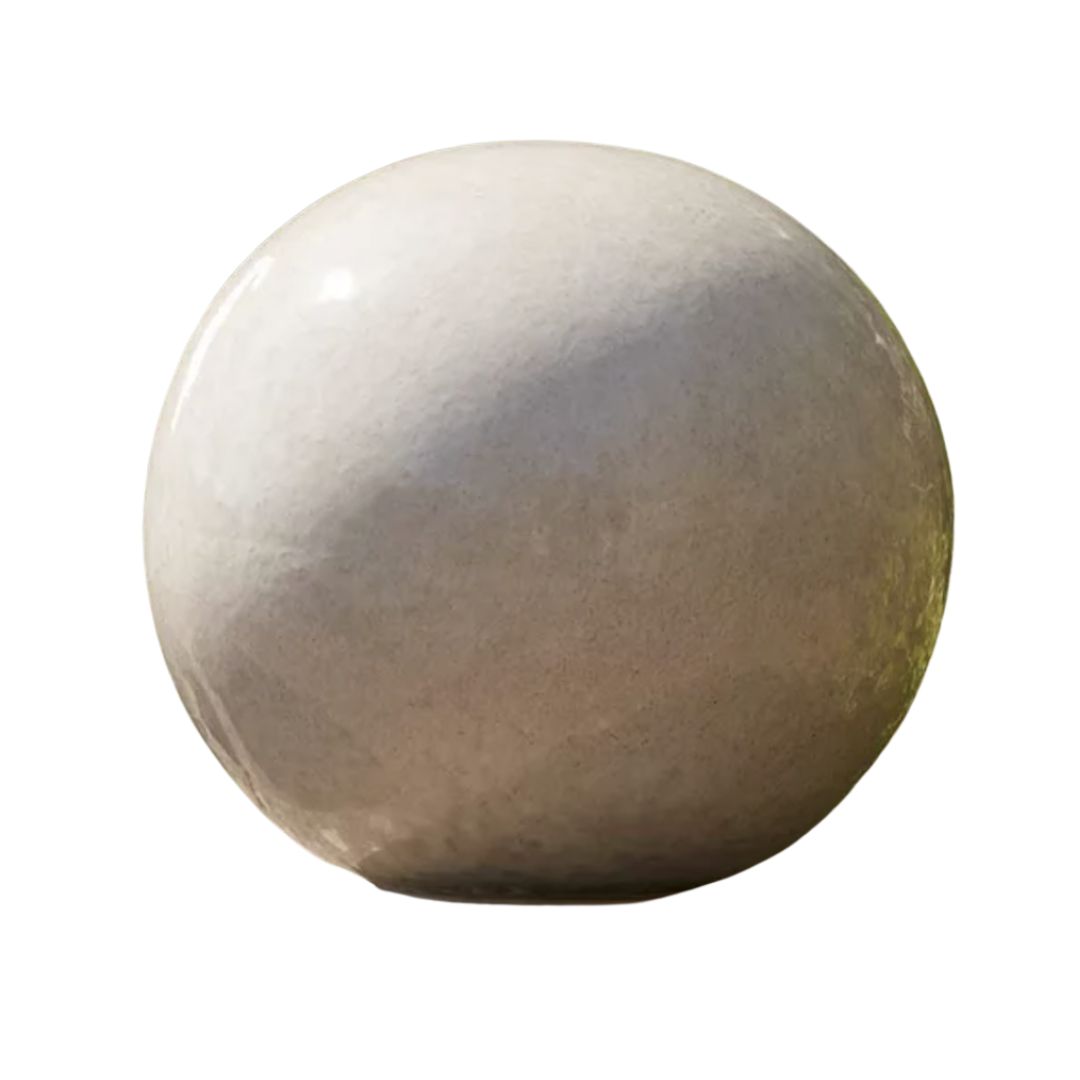5 Things Minimalists Never Have in Their Gardens — For Simpler, More Streamlined Outdoor Spaces
Turn your straggly garden into a sophisticated outdoor setting by steering clear of this list of items that minimalists would never go near
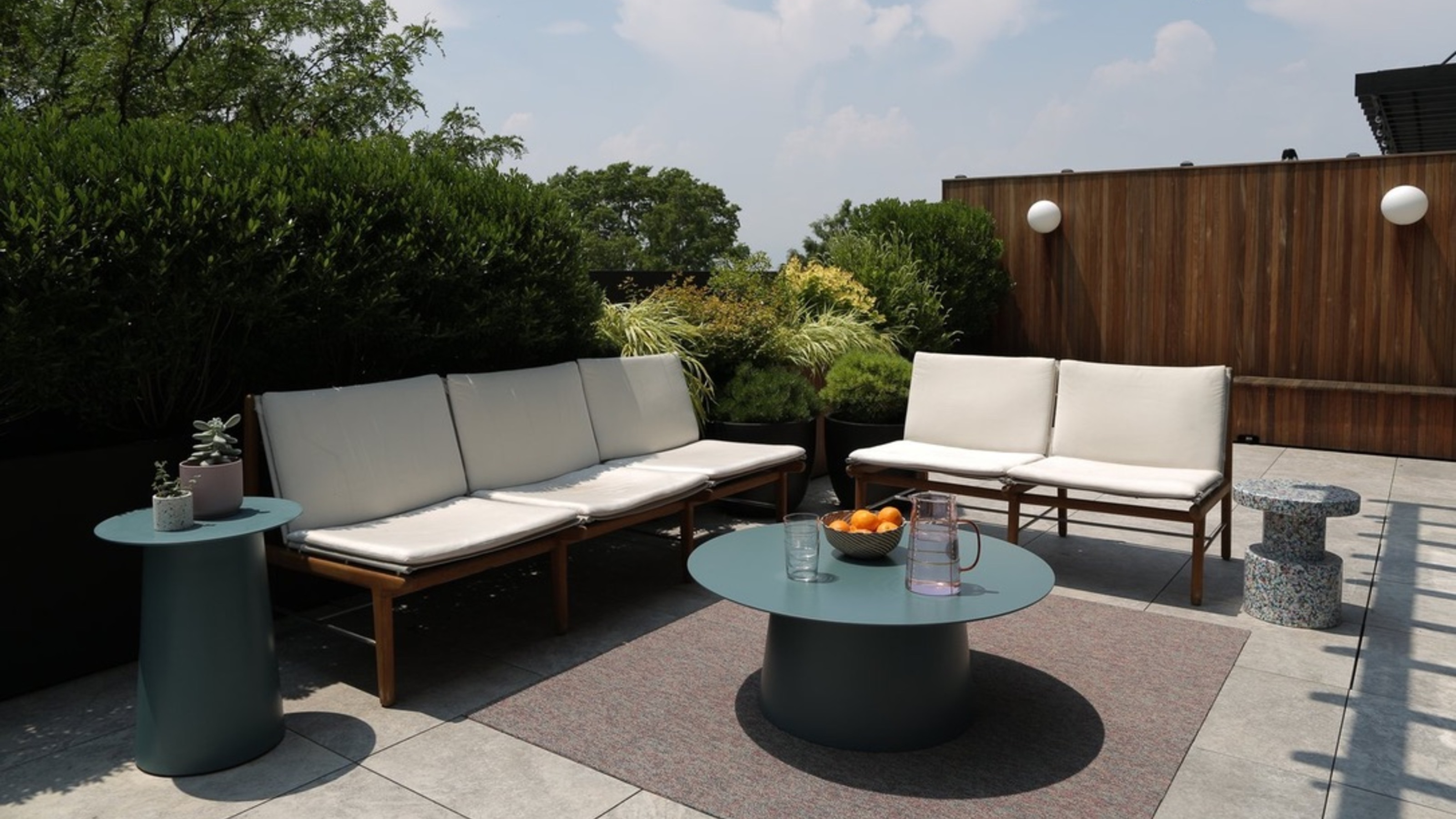

Minimalism might not be for everyone, but you have to respect the suave and sophisticated approach to decorating. Something about its aesthetic simplicity — embracing design in its rawest, truest form — is so visually soothing and impactful, you can't help but admire it. And of course, it's a design style that not only applies to interiors, but also extends out into the garden, too.
When it comes to beautiful gardens, minimalists are doing things right. Most of us don't give our garden the same level of attention we do our interiors, resulting in a messy, overgrown outdoor space that doesn't reflect the pride we have for our homes. Channeling a simple yet sophisticated aesthetic in a minimalist backyard just doesn't come as easily as it does inside the home. And yet, once you learn how to pull it off, the results are unparalleled.
That's why you ought to take a leaf out of the minimalists' book if you're looking to curate a calm and soothing landscape design. You certainly won't find straggly, overgrown shrubs in a minimalist's garden, or tawdry string lights that harbor dirt and dust. No — minimalist backyards are nothing if not refined and elegant. Here is a list of things you'll never find in a minimalist's garden to help set you on the path to a simpler, more streamlined garden of your own.
1. Busy Planting Schemes
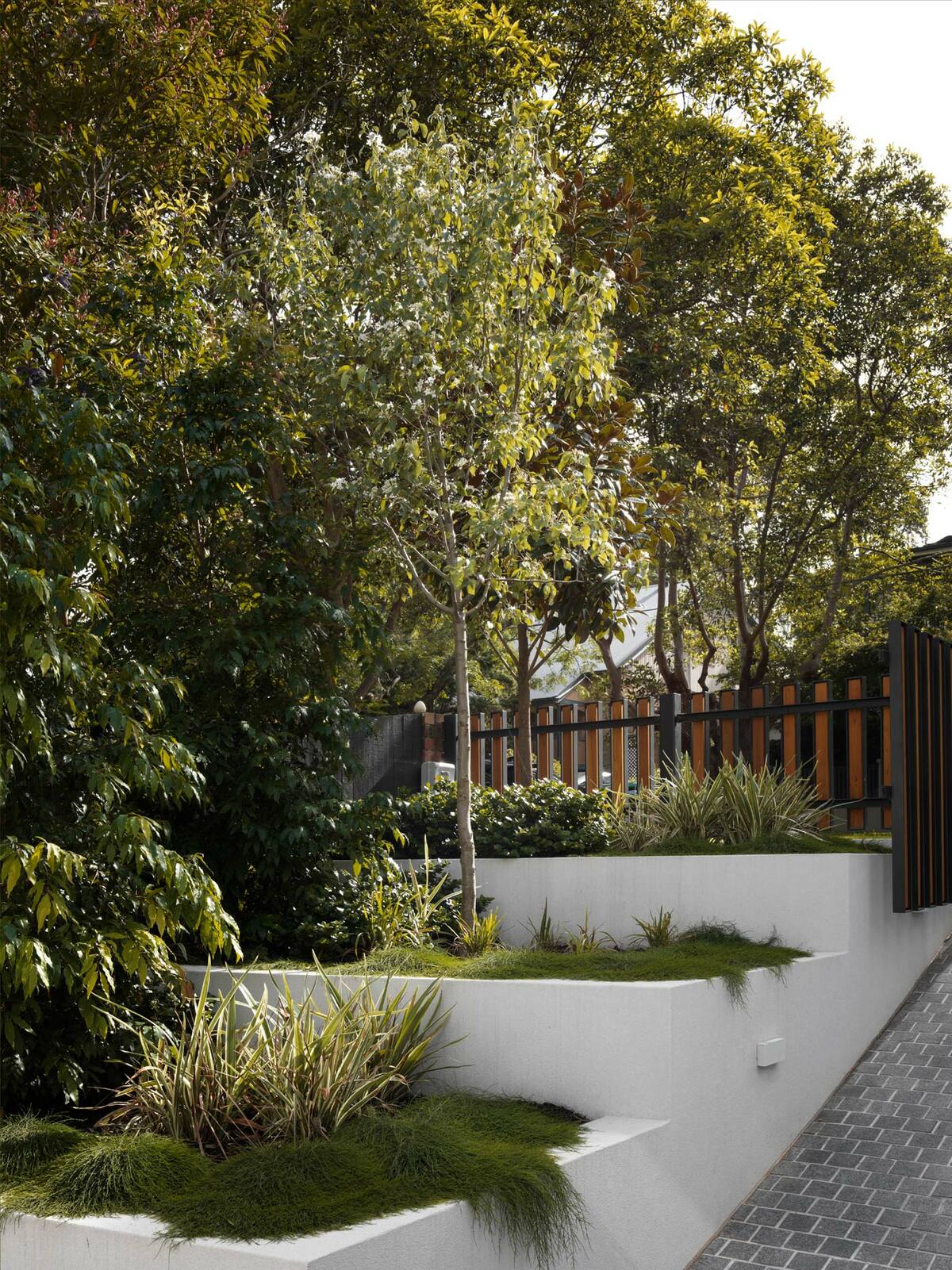
DO INSTEAD: Keep flowers and shrubs cohesive, and consider sticking to a single palette or planting idea that repeats throughout your space (ornamental grasses often work well).
Minimalism in interior design is a style characterized by a pared-back, no-frills aesthetic. Busy, cluttered decor is a no-go. The same ethos applies to minimalist gardens. While beautiful in their own right, unbridled, chaotic planting schemes that encompass wild flowers or bright and bold displays just won't channel the simple, refined elegance that minimalists' gardens do. In the latter, you certainly won't find busy planting displays, where every flower, planter, and shrub compete for your attention.
Laura Janney, CEO at The Inspired Garden, notes that a minimalist's backyard will never feel crowded. "Avoid mixing too many plants in a single bed or container, as it can easily look messy," she says. "Instead, I’d recommend embracing repetition. Multiple rows of the same plant create rhythm and give your eye a place to rest."
It's a sentiment shared by Katherine Aul Cervoni, professional landscaper and founder of Staghorn NYC. "Too many plant varieties can feel chaotic and disjointed, and too much color feels loud," she says. To make planting feel more minimalist, choose a limited palette of plants and repeat them throughout the space for a more cohesive look. Katherine recommends sticking to one color for flowering plants, such as white, to keep the energy more tranquil, or you could limit your planting scheme to ornamental grasses for a simple textural effect.

Katherine 'Kat' Aul Cervoni is the founder and principal of the landscape design firm, Staghorn NYC, as well as the home-gardening blog The Cultivation. With a passion for helping people reconnect with nature in their everyday lives, Kat designs outdoor spaces that function as natural extensions of the home. Her work emphasizes low-maintenance, sustainable plantings — especially native species — that offer long-term beauty and ecological value. Kat’s design approach balances seasonal interest with practical, livable spaces that invite daily use and year-round enjoyment.
2. Overgrown or Uncontained Beds
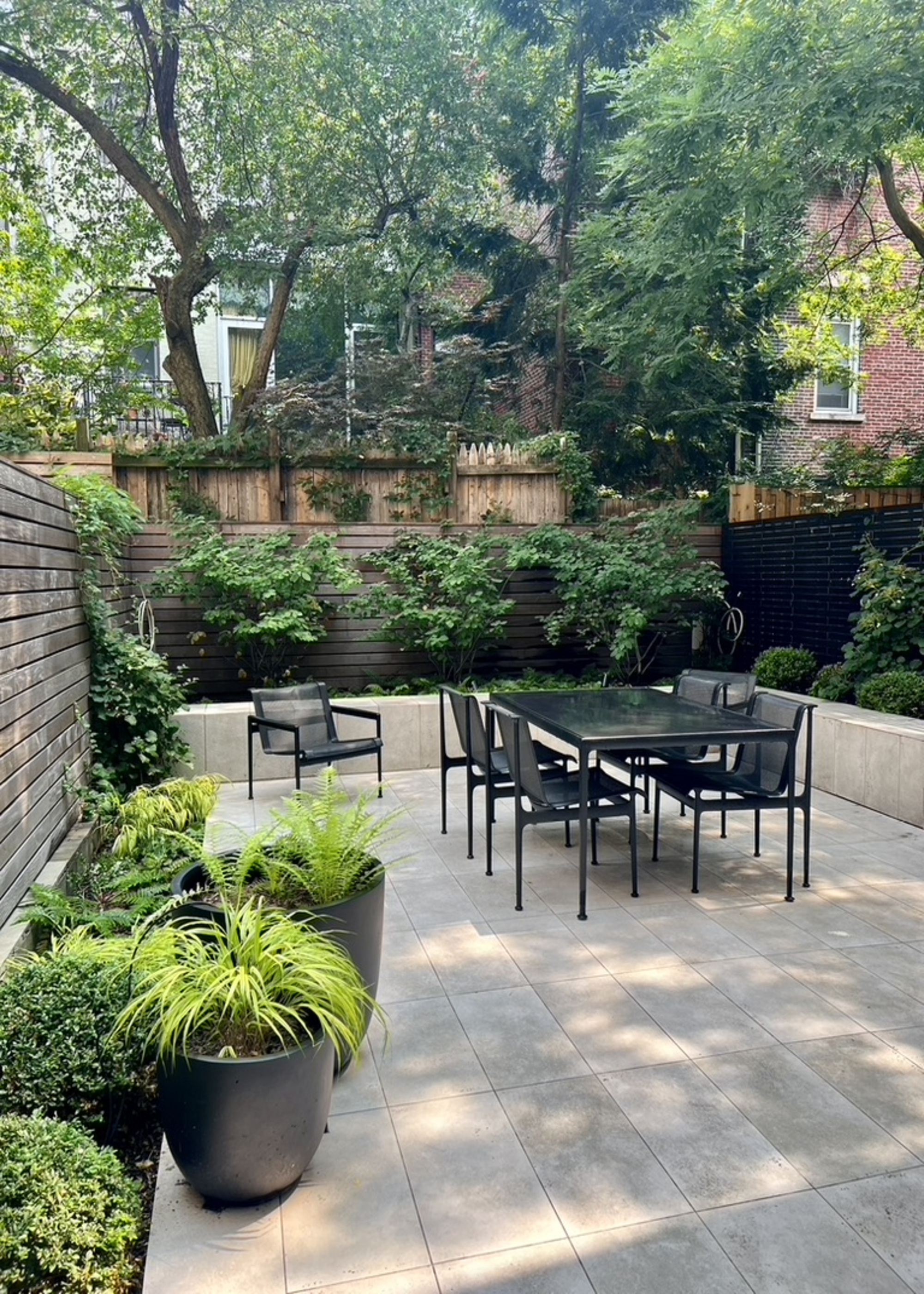
DO INSTEAD: Ensure that your beds and borders look neat with a clean, crisp finish. A slim, straight border works best for minimalist spaces.
The minimalist mentality is about living well with less, but they're also generally cleaner and tidier than most. That's also true of the garden. A patio strewn with kids' toys or gardening tools? There's no chance you'd find such a sight in a minimalist's outdoor space.
The Livingetc newsletters are your inside source for what’s shaping interiors now - and what’s next. Discover trend forecasts, smart style ideas, and curated shopping inspiration that brings design to life. Subscribe today and stay ahead of the curve.
Garden border ideas and flower beds won't be overgrown in a minimalist's garden, either. "Messy edges and sprawling plants disrupt clean lines," says Katherine. "This shouldn’t be confused with lushness, which is ok, but it needs to look managed." Instead, she recommends embracing some landscape edging ideas like steel or stone to define beds, as well as trimming or dividing plants to keep them contained.
You shouldn't let your flower beds look too unrestrained, either, and limiting your color palette is a good place to start. "In minimalist landscapes, color is used sparingly and thoughtfully," says Laura. "Stick with a palette of soft greens and whites, or maybe cool blues and silvers. When in doubt, green-on-green always works!"
3. Cluttered Furniture Arrangements
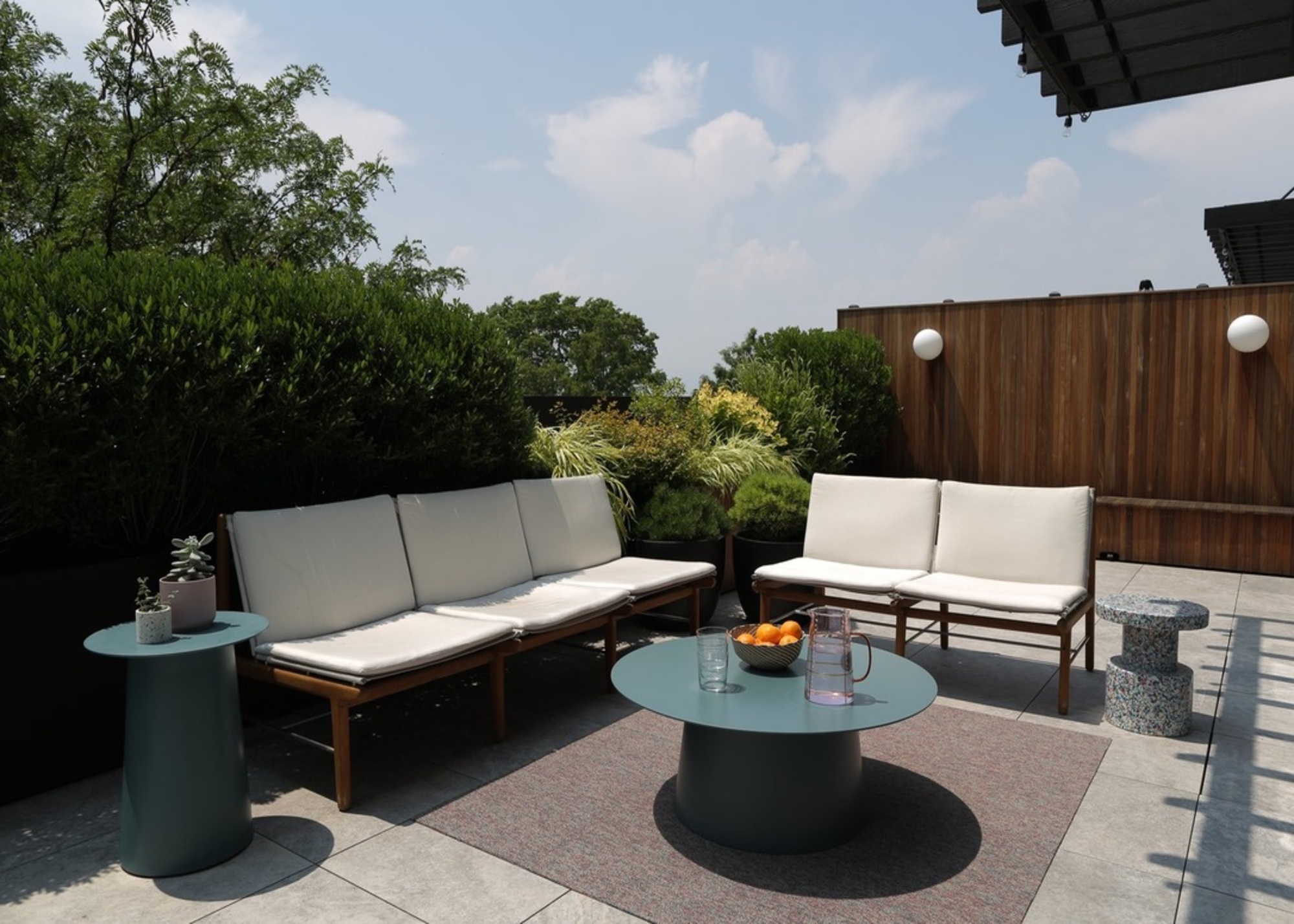
DO INSTEAD: Stick to a minimalist furniture tableau like this one. Incorporate simple seating, a few side tables, and just one centerpiece for a pared-back look.
There's been a big move toward outdoor living spaces in recent years, but in minimalists' gardens, modern outdoor furniture will be kept to a minimum. They never have overly extravagant setups or cluttered furniture arrangements in their backyards.
"Too many chairs, benches, or accessories can make small spaces feel crowded," Katherine points out. "Instead, invest in fewer, higher-quality pieces with simple silhouettes and multi-functional use. And again, keep to one style of furniture and accessories so that it doesn’t start to feel too eclectic."
Besides the arrangement of your garden furniture, opt for a more refined style if you want to harness a minimalist look. Those gaudy, oversized outdoor cushions and beanbags are definitely to be avoided. "Bright cushions or trendy shapes can cheapen the look of a space very easily," Laura notes. "For a more timeless, minimalist feel, choose furniture in neutral tones such as teak, black metal, or stone."
4. Brightly Colored Plastic Pots
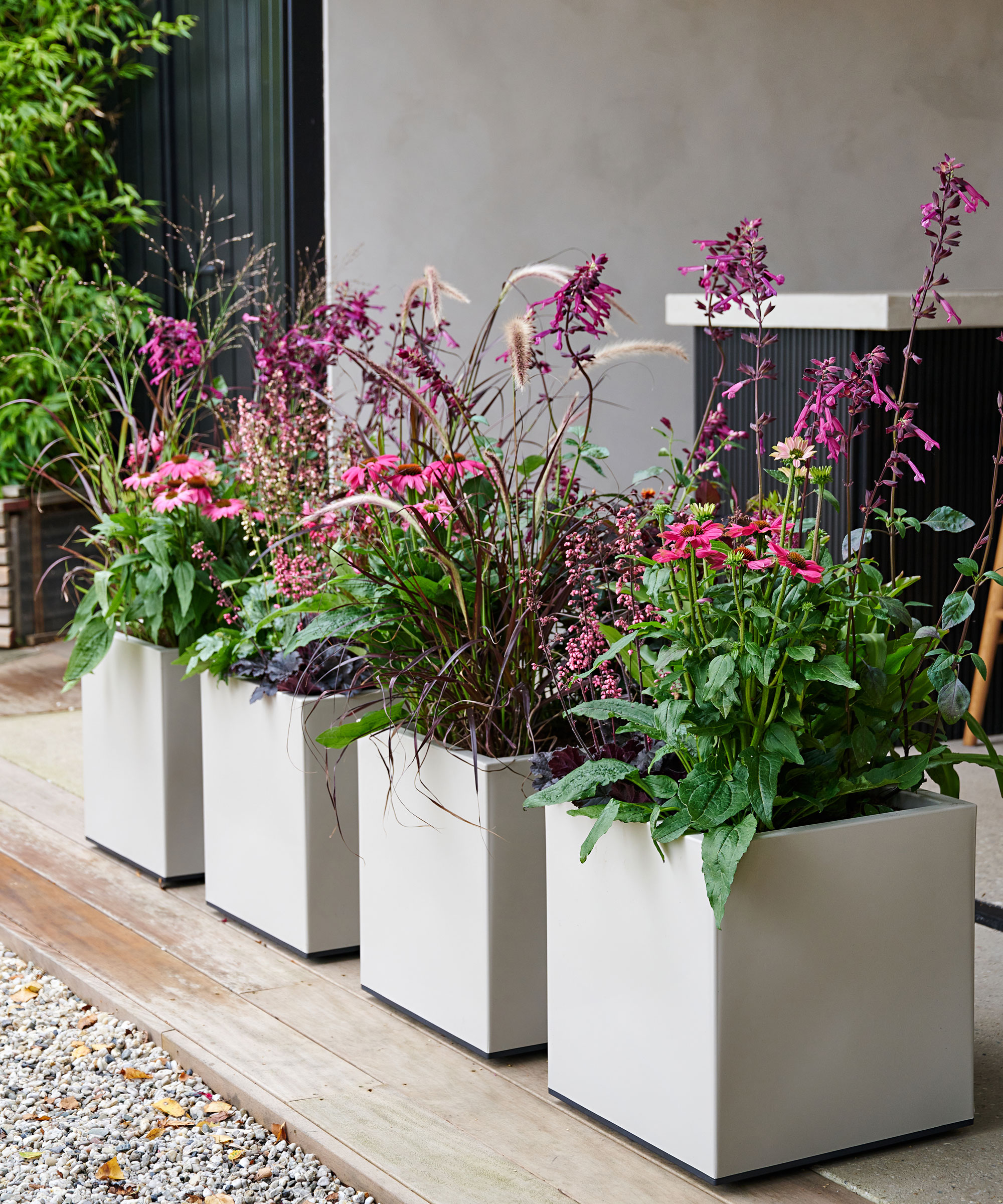
DO INSTEAD: Stick to one type of planter, such as terracotta or concrete, for an elevated container garden that lets your flowers and shrubs do the talking.
While on the topic of bright and lurid accessories, be intentional with your planters. Something minimalists never have in their gardens is colorful pots or containers that feel showy and over-the-top.
Laura says brightly colored plastic pots never feature in minimalist backyards. "If you're going for minimalist and elevated, choose timeless containers such as ceramic, fiber cement, or weathered metal. Even one beautiful pot can anchor a space with elegance."
Katherine agrees. "Loud garden accessories can compete with the natural beauty of plants," she says. "I avoid colorful ceramics or ornate moldings and details on planters in minimalist gardens." For a more minimalist approach, she suggests sticking to neutral, earthy tones for planters to keep the focus on form and foliage. "The planters should sort of fall into the background," she says. Think rustic terracotta, fluted concrete, or aged limestone troughs.
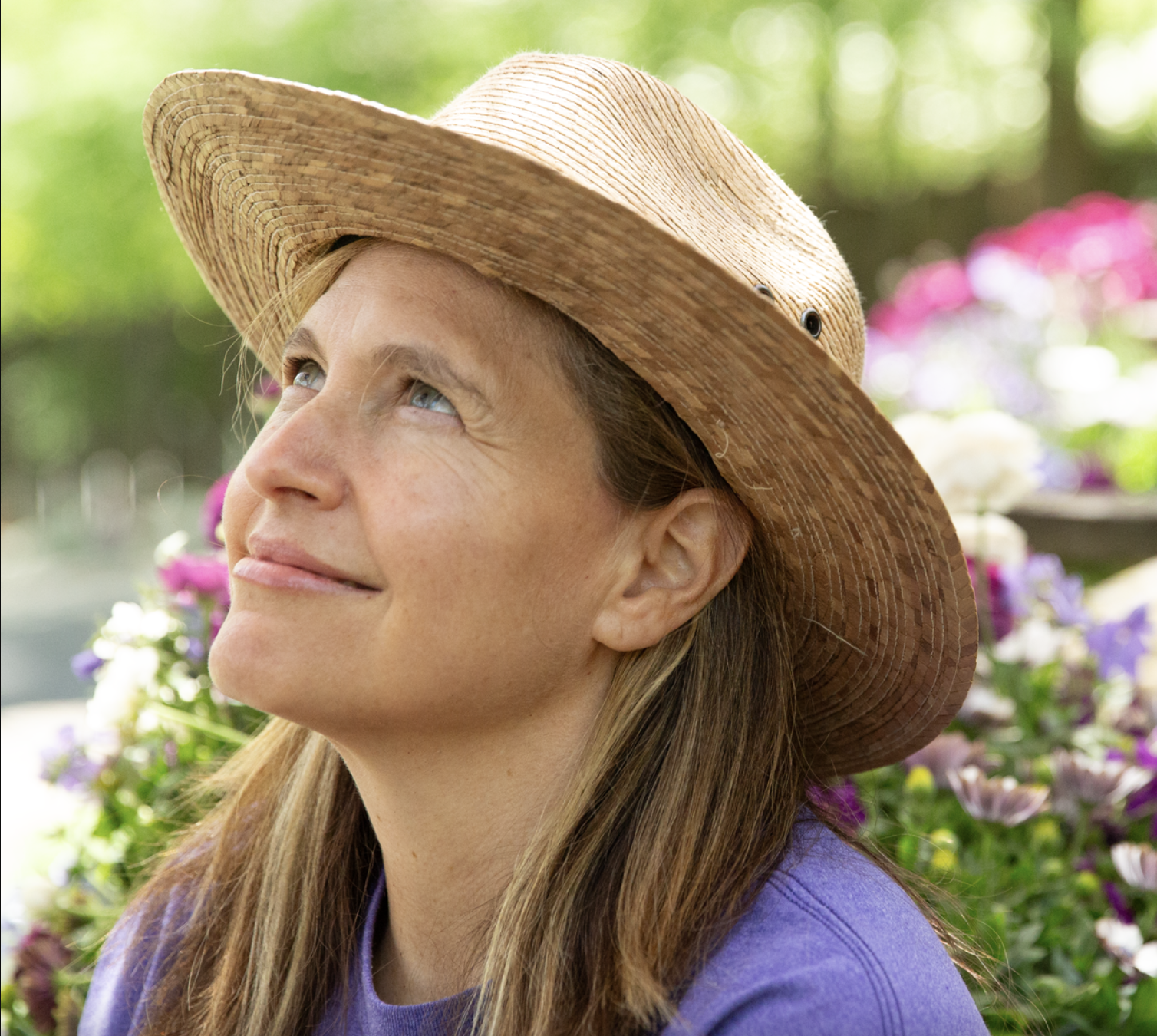
Laura has left her mark on the cottage garden landscape design scene, recently winning the 2023 Houzz Best in Design award for her work in the New York area. Driven by the belief that “flowers feed the soul,” Laura sees gardens as more than simply outdoor spaces – they are living, breathing sanctuaries that feed the soul and awaken the senses.
5. Kitsch Garden Features or Ornaments
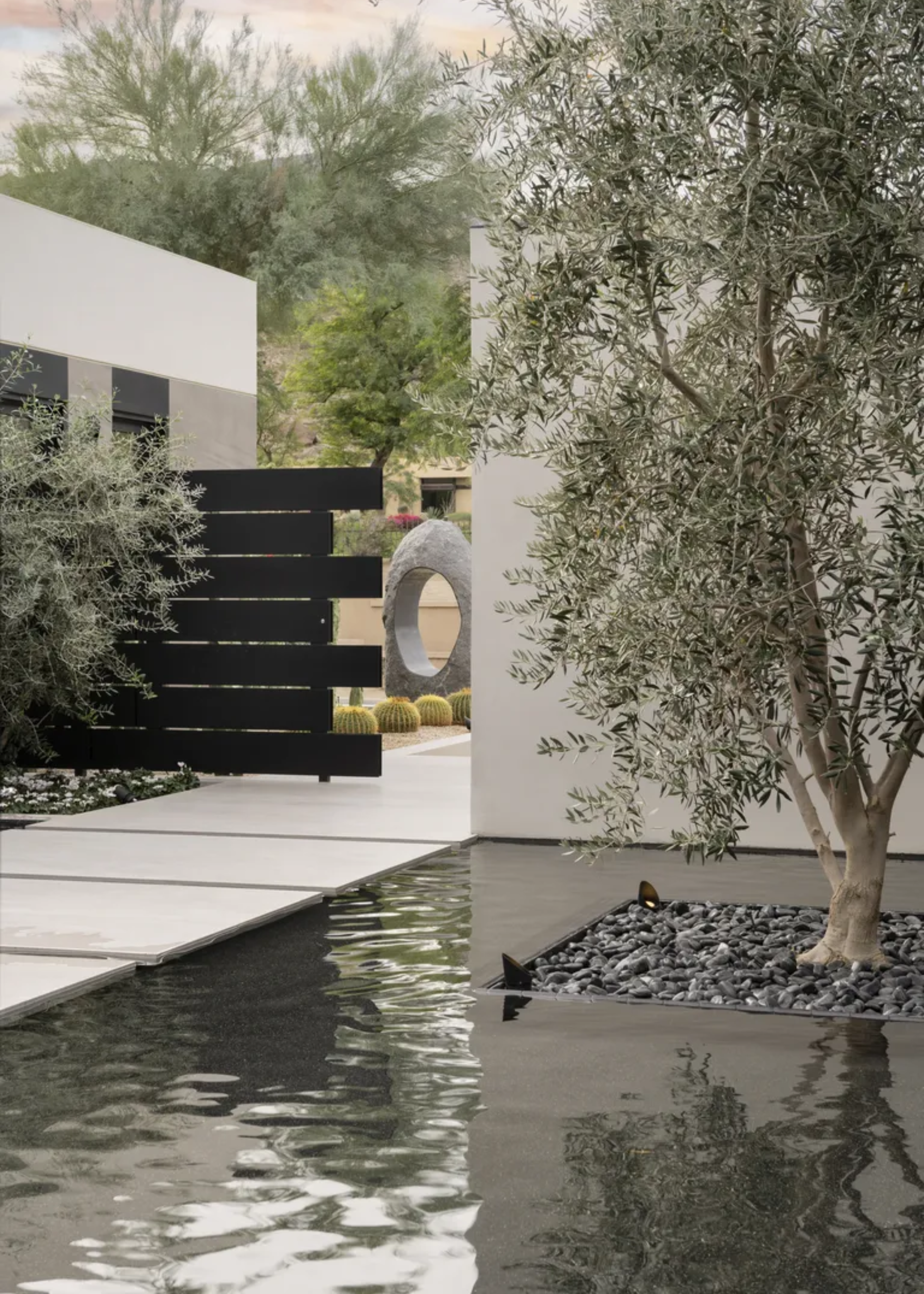
DO INSTEAD: Keep decorations to a minimum. And if you really want to incorporate a water feature, go thematic and make it part of the landscape (rather than making it an incongruous afterthought).
Water fountains? Decorative stakes? Gnomes? Not features you'll find in a simple, minimalist landscape design. "Whimsical statues, bold water features, and decorative extras can overwhelm a minimalist space," says Katherine. These kitsch ornaments only detract from the simplified natural beauty of the space.
"Instead, try placing a single sculptural element, like a simple stone sphere or a modern water feature, in your garden," Laura suggests. "Choose one focal point, whether that be a fire pit, architectural planter, or dramatic tree, and let it have the spotlight. The rest of your decor and plants should support the view, not compete with it."
Katherine says orbs and architectural trees also lend themselves well to a minimalist garden design. And if you're dead-set on integrating a water feature or light installation, make it a thematic element of your landscape, rather than a random afterthought. Take inspiration from the space above, for example, where a pool of water makes up the foundation of this patio, surrounding the olive tree at the center.
Minimalist garden design is about embracing clean lines, modern forms, and raw simplicity. Anything that contributes to a busy, cluttered, or ornamental aesthetic will only detract from the soothing and sophisticated you aspire to. Follow the advice of these landscapers and avoid decorating with the things listed above if you want a simple garden that promises to make a statement.

Lilith Hudson is a freelance writer and regular contributor to Livingetc. She holds an MA in Magazine Journalism from City, University of London, and has written for various titles including Homes & Gardens, House Beautiful, Advnture, the Saturday Times Magazine, Evening Standard, DJ Mag, Metro, and The Simple Things Magazine.
Prior to going freelance, Lilith was the News and Trends Editor at Livingetc. It was a role that helped her develop a keen eye for spotting all the latest micro-trends, interior hacks, and viral decor must-haves you need in your home. With a constant ear to the ground on the design scene, she's ahead of the curve when it comes to the latest color that's sweeping interiors or the hot new style to decorate our homes.

